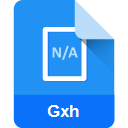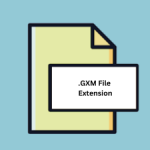.EDN File Extension

What is an EDN file?
In the realm of digital design and electronic engineering, the .EDN file extension holds significant relevance, representing the EDIF Implementation Netlist File.
This file format plays a crucial role in the exchange of electronic design information among different design tools and platforms.
In this article, we delve into the origins, history, structure, technical specifications, advantages, and disadvantages of .EDN files. Furthermore, we’ll explore methods to convert and open these files across various operating systems.
More Information.
The primary purpose of the .EDN file extension was to encapsulate netlist information generated during the synthesis process of electronic designs.
Netlists, which enumerate the logical connections between electronic components in a design, are essential for subsequent stages of the design flow, including simulation, verification, and physical layout.
Origin Of This File.
The .EDN file format originated from the Electronic Design Interchange Format (EDIF), a standard introduced in the 1980s to facilitate the exchange of electronic design data between different CAD (Computer-Aided Design) tools.
Initially developed by the Electronic Industries Alliance (EIA) and later adopted by the Institute of Electrical and Electronics Engineers (IEEE), EDIF aimed to streamline the design process and promote interoperability among various design tools.
File Structure Technical Specification.
An .EDN file typically consists of ASCII text-based data organized in a hierarchical structure. The file contains information regarding the logical and physical aspects of a design, including components, connections, attributes, and constraints.
EDIF defines a standardized syntax and semantics for representing this design information, ensuring compatibility and interoperability across different CAD tools and environments.
The technical specifications of .EDN files conform to the EDIF standard, which encompasses various versions and revisions over the years.
These specifications detail the syntax, grammar, and semantics of the file format, specifying rules for encoding design data and ensuring consistency and reliability in data exchange.
How to Convert the File?
Converting .EDN files to other formats or vice versa may be necessary to facilitate interoperability or accommodate specific toolchain requirements. Several tools and methods are available for converting .EDN files:
- Using CAD Tools: Many CAD tools support importing and exporting .EDN files, allowing users to convert them to and from other common formats such as VHDL, Verilog, or proprietary formats.
- Third-Party Conversion Utilities: Dedicated conversion utilities or scripts may be available for converting .EDN files to desired formats or vice versa. These utilities may offer advanced features and customization options.
- Online Conversion Services: Online platforms or services specializing in file conversion may provide options for converting .EDN files to various formats, accessible through web browsers with internet connectivity.
Advantages And Disadvantages.
Advantage:
- Interoperability: .EDN files facilitate seamless data exchange between different CAD tools and platforms, promoting collaboration and compatibility in the electronic design ecosystem.
- Standardization: As part of the EDIF standard, .EDN files adhere to well-defined specifications, ensuring consistency and reliability in design data representation.
- Efficiency: By encapsulating netlist information, .EDN files streamline the design flow, enabling efficient synthesis, simulation, and verification of electronic designs.
Disadvantage:
- Complexity: Understanding and manipulating .EDN files may require familiarity with the EDIF standard and its intricacies, posing challenges for novice users and developers.
- Limited Human Readability: Due to their binary nature and hierarchical structure, .EDN files may be less human-readable compared to other file formats, making manual inspection and debugging more challenging.
- Version Compatibility: Compatibility issues may arise when dealing with .EDN files are generated using different versions or revisions of the EDIF standard, requiring careful version management and conversion.
How to Open EDN?
Open In Windows
- Use CAD software such as Altium Designer, Cadence Allegro, or Mentor Graphics PADS, which natively support .EDN files.
- Install third-party CAD tools or viewers compatible with .EDN files, available from software vendors or online repositories.
Open In Linux
- Utilize open-source CAD tools like KiCad or LibrePCB, which offer support for .EDN files through plugins or extensions.
- Explore third-party CAD software options compatible with Linux distributions, available for download or installation from repositories.
Open In MAC
- Employ CAD tools compatible with macOS, such as Autodesk Eagle or Cadence OrCAD, which support .EDN files for design visualization and editing.
- Install virtualization software to run Windows-based CAD applications on macOS, enabling compatibility with .EDN files.
Open In Android
- Explore mobile CAD applications available on the Google Play Store, offering .EDN file support for viewing and basic editing tasks on Android devices.
- Utilize remote desktop or cloud-based CAD solutions accessible through Android apps, enabling access to CAD tools compatible with .EDN files.
Open In IOS
- Look for CAD apps optimized for iOS devices, providing features for viewing and annotating .EDN files directly on iPhones or iPads.
- Utilize cloud storage and collaboration platforms integrated with CAD functionalities, enabling access to .EDN files on iOS devices through web browsers or dedicated apps.
Open in Others
- Investigate specialized CAD solutions tailored for specific industries or applications, offering support for .EDN files on niche platforms or embedded systems.
- Explore emerging technologies and platforms for design collaboration and visualization, which may provide innovative ways to interact with .EDN files across diverse environments and devices.













